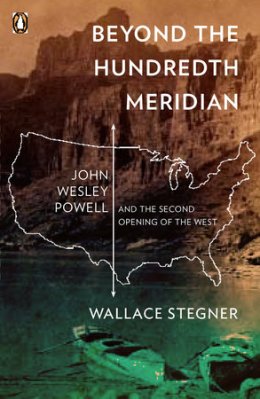But water is like that: it pulls on us. You can’t ignore the tug. There’s always something new to say about water. It’s personal, political, divisive, binding, subtle, dramatic. Let’s be clear about this: the future of water is the future of civilization. In this age of permanent drought and unstable climate—skyrocketing populations and diminishing rivers—we’ve got reason to worry.

To start, two books that offer historical context. Marc Reisner’s Cadillac Desert: The American West and Its Disappearing Water is still the standard today for exhaustive research on the dam-building politics of the 20th century. Like many other books published during the dry 1980s, just after Lake Powell filled, it’s a somewhat grim read, but a necessary one.
Wallace Stegner’s Beyond the Hundredth Meridian gives a glimpse into a West that never was. Stegner draws a compelling portrait of Major John Wesley Powell, who crafted an intelligent (and ultimately ignored) vision for settling the West based on water’s availability.

For more works of investigative journalism, try Robert Glennon’s Unquenchable, Cynthia Barnett’s Blue Revolution, and Charles Fishman’s The Big Thirst. All three take readers on a tour of water management in the United States, with insightful attention to follies and failings. They offer solid solutions based on solid research: not a tenuous hope with feathers, but a decisive hope with talons.

Robert Michael Pyle’s The Thunder Tree: Lessons from an Urban Wildland gives a primer on Western water politics wrapped in elegiac storytelling. Pyle explores water through the lens of his childhood rambling the High Line Canal in Colorado, and makes a powerful case for fostering an ethical relationship to the natural world.
Melissa is the Interviews Editor at Terrain.org. To read more, see “Poetry is Impervious to Bullets,” an interview with Sholeh Wolpé, or one of her essays, “The Bighorn’s Dilemma” and “On the Trail of Mountain Lions,” appearing in earlier editions of Terrain.org.
Header image of Hoover Dam and the Colorado River at Lake Mead by Simmons B. Buntin.






